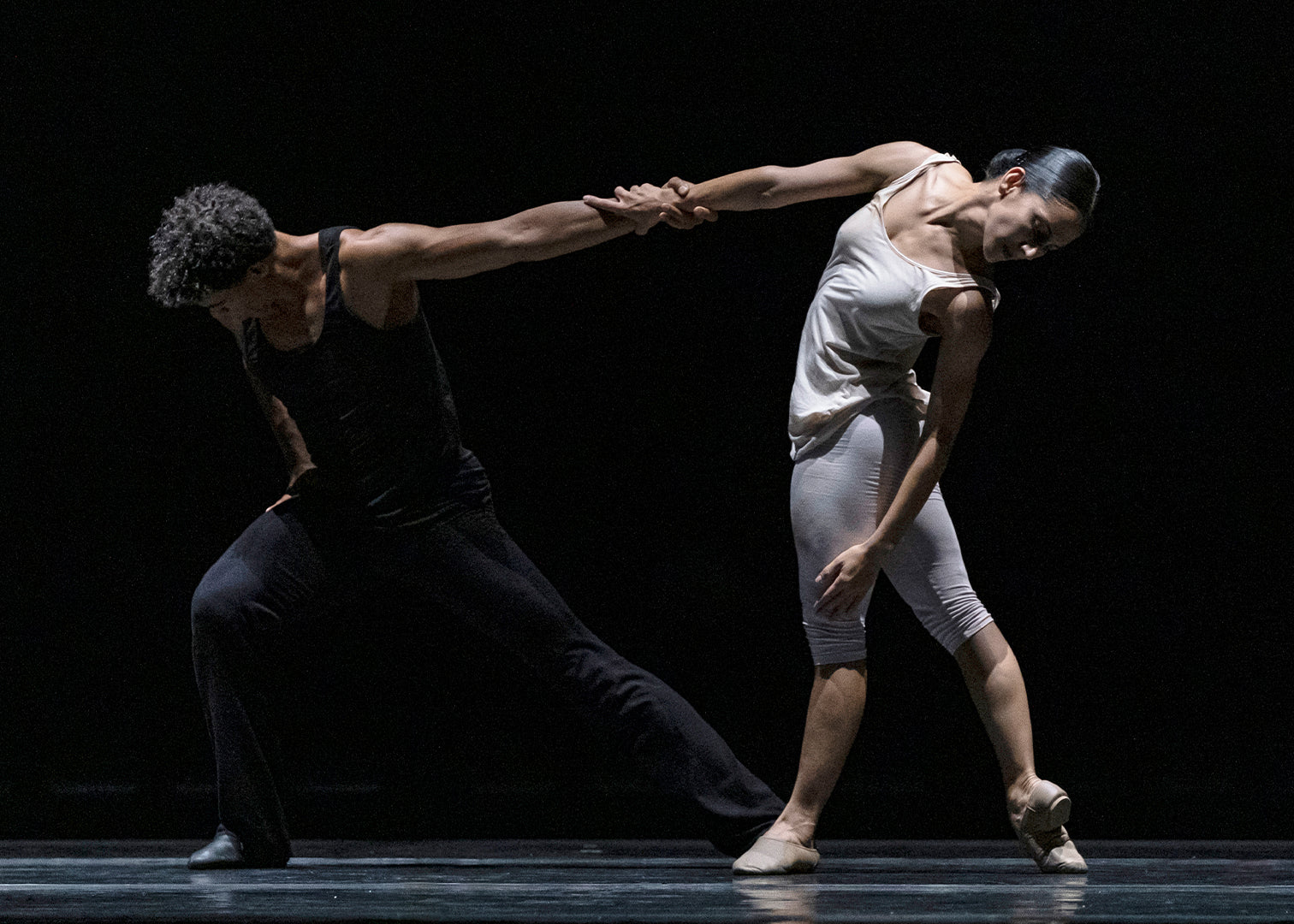The programme proved a delightful one in many respects, not least because of its forward-facing outlook: instead of opting for a retrospective on his greatest hits, Alston put forward four premieres, including two commissions from young choreographers (Joseph Toonga and R.A.D.C.'s own Ihsaan de Banya). The evening wasn't all about new work, though; two spots were reserved for revivals of Alston classics, including the much-loved “Overdrive,” which remains a staple test piece for the Dance GCSE. Between them, the six pieces sample a rousing range of styles, from lyrical to street, and showcase the company in some exciting incarnations.
First up was a new work from Martin Lawrance, an R.A.D.C. associate choreographer. With its bright lights and clangorous first notes, “Opening Gambit” immediately declares itself exuberant. The piece sees the whole company gliding and darting, egged on by a relentless percussion that promises to climax but never quite does. The performers match the jazzy beats with a mix of slinky postures and jerky movements, sharply cutting their phrases short and reverting to pedestrian stances between each one. I could have done with a little less affected nonchalance—the 'see how much I don't care' attitude wears a little thin—but there's no denying the muscularity on display, nor the precision behind Lawrance's seemingly hectic phrasing.
Two guest dancers—students from the University of Michigan's undergraduate dance programme—performed the second piece, a duet taken from Alston's 1997 work “Brisk Singing.” Their performance didn't have the bite of the previous one, but it was resonant all the same, the dancers' scooping, stretching, swinging shapes wonderfully consonant with the uplifting music.
Ihsaan de Banya had a stand-out evening: his four performances across the bill were top-standard, and his new work “Rasengan” was enthusiastically received. He features in the piece along with Nicholas Bodych and the magnetic Oihana Vesga Bujan. Set to a tech soundtrack crackling with static and threatening beeps, it's much like Lawrance's work in its steady gait. Unlike “Opening Gambit,” however, there's no tense edge; the piece is wonderfully tranquil, the dancers slipping smoothly between convex and concave shapes, their arms wide and backs curved. I was particularly drawn to the androgynous costuming—tunics and trousers for all three—and the partner work, which involved some inventive multi-level tableaux and in which the dancers demonstrated great levels of chemistry.
Interestingly, I thought de Banya's best showing was not in his own work but in Joseph Toonga's “Unease,” a deconstruction of popping that breaks down the style's jerky limbs and sharp contractions and reassembles them with a newfound, hypnotic fluidity. Here de Banya's sculpted arms and flexibility came to the fore as he and four other dancers flexed through a series of demanding shapes, moving with a resistance that made it seem like they were underwater. It's quite the departure from the company's usual fare, but the it wasn't just de Banya who looked at home with it; Elly Braund and Vesga Bujan also embraced the style particularly well.
By contrast, Alston's “Mazur,” another premiere, was all smooth lines and untethered leaps. The duet is set to a series of Chopin mazurkas and plays on the musician's nostalgia for his homeland—a fitting theme, given the programme's purpose. Jonathan Goddard and Liam Riddick, clad respectively in comely red and blue waistcoats, brilliantly inhabited their roles as friends commiserating over their shared melancholy. Riddick was the more optimistic of the two, a characterisation reflected in his open-armed turns and sky-high cabrioles; Goddard, meanwhile, was more brooding, more grounded in his poses. The delicate gestures of friendship punctuating the choreography—handshakes, heads resting on shoulders—were especially moving, as was Jason Ridgway's on-stage piano-playing.
The programme concluded like it started, with the whole company on stage, this time performing Alston's 2003 piece “Overdrive.” The textured music (Terry Riley's tinkly Keyboard Studies No. 1) and uplifting choreography (a cascade of slicing arms and suspended leaps) were lovely notes to end the evening on, and a good reminder of Alston's instinctive penchant for marrying dance and music. It's little wonder this piece has appeared in every performance throughout the company's tour—it's endlessly, matchlessly stirring.









comments